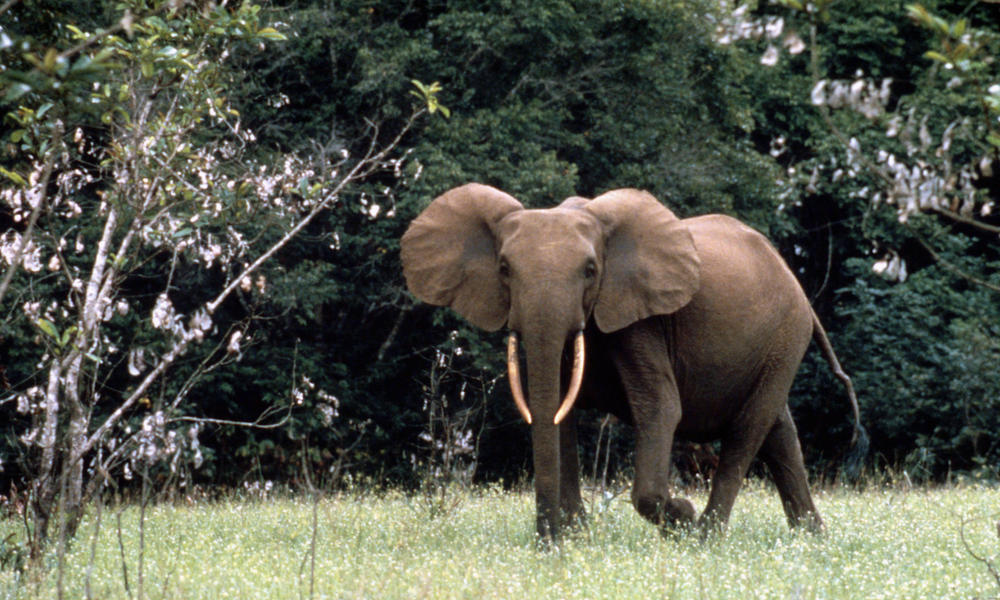African Forest Elephants (2/5-2/9)
 |
| https://c402277.ssl.cf1.rackcdn.com/photos/1019/images/story_full_width/Forest_Elephant_7.30.2012_hero_and_circle_HI_8480.jpg?1345583833 |
Summary:
The African forest elephant is an herbivore, and commonly eats leaves, fruit, and bark. African forest elephants range from 2.5 - 3 meters in height, weighing from 50-200 pounds. Their color is usually brown and grey, and even though other coloring is possible, it is very rare. They live for about 60-70 years, which is quite a lot compared to some other forest animals. The African Forest Elephant lives in Central and Southern Africa, traveling through the forests and grasslands searching for food and water.Why Endangered:
The populations of these Forest Elephants is decreasing because of illegal poaching. The poachers kill the elephants for their ivory tusks to sell. They are also decreasing because of habitat destruction such as deforestation, which results in less food and shelter, which they need to survive. According to defending wildlife, there are an estimated 450,000 - 700,000 African elephants in the world today. According to WWF, there are around 415,000. According to national geographic, there are about 352,271 African Forest elephants left in the world. On average, most sites say that there are between 350,000- 500,000 African Forest Elephants left in the world today, which is not many compared to how many there were in the late 1900s.Interactions and Importance:
Just as all other animals in various different ecosystems, the African Forest Elephant interacts with other organisms every day and has various symbiotic relationships. Some examples are with the baboons who drink from the water holes dug by the elephants. In return, the baboons sit in the trees and alert the elephants of any danger and predators. Another symbiotic relationship is between the elephants and oxpeckers. The oxpeckers eat parasites from the skin and hair of the elephants, which helps the elephant by taking out the various ticks and lice that may be dangerous and spread disease. This benefits the oxpecker because it requires eating these parasites to survive.African forest elephants are very important to both the ecosystem that they live in and the humans that live there. Elephants help with gardening, construction, and culture. Elephant droppings help improve the soil condition and crops in Africa by serving as a fertilizer. Elephant droppings are also helping the ecosystems with seed dispersal for animals such as baboons and birds, who eat the seeds and nuts. Elephants also help with construction. They help other animals survive by creating grasslands by pulling down various trees and bushes. Elephants create water holes, which help not only them have access to clean water, but also other animals and various tribes. As well as being important to the ecosystem and organisms in its environment, African Forest Elephants are very important towards African culture. They are a sign of wise leaders and appear in jewelry and other items. According to save the elephants, “Across Africa they have inspired respect from the people that share the landscape with them, giving them a strong cultural significance."
SP8: Obtain, Evaluate, and Communicate Information
This week, we obtained information about African Forest Elephants from a variety of sources. Next, we evaluated the information and sorted it into various categories and answered the required questions. Once we finished answering the questions, we communicated it with the rest of our team so that we could understand more about our endangered species. We used the evaluated information to start creating the timeline and food chain, which we would later add to our infographic, which has all of the collected information and findings. This has helped us learn more about this species and understand why it is endangered.
XCC: Cause and Effect
This week, I noticed a cause and effect relationship between the African forest elephants and the illegal poachers. The cause is that the poachers are illegally killing the elephants to sell the ivory and skin. The effect of this is that the number of elephants is decreasing, which has lead to them being labeled as "vulnerable" on the IUCN list. This comparison is very similar with deforestation leading to the decrease of the population of Africa's elephants. This relationship can be tested by keeping track of the number of elephant killings and population decrease each year. This relationship can help us understand that it may be difficult for the organisms and the ecosystem to survive with less and less of African forest elephants.
Multiplier
This week, I was a learner. I wanted to learn more about African forest elephants so that I could understand more about how they contribute and take part in the ecosystem. I read and analyzed various articles and sources so that I could learn as much as I could about African Forest Elephants. My group also shared information and ideas so that we could understand the topic to the highest level. This has helped me understand more about African forest elephants and why they are important in the world we live in.
In this Blog, I wrote about the endangered animal The AFrican Forest Elephant.
ReplyDelete